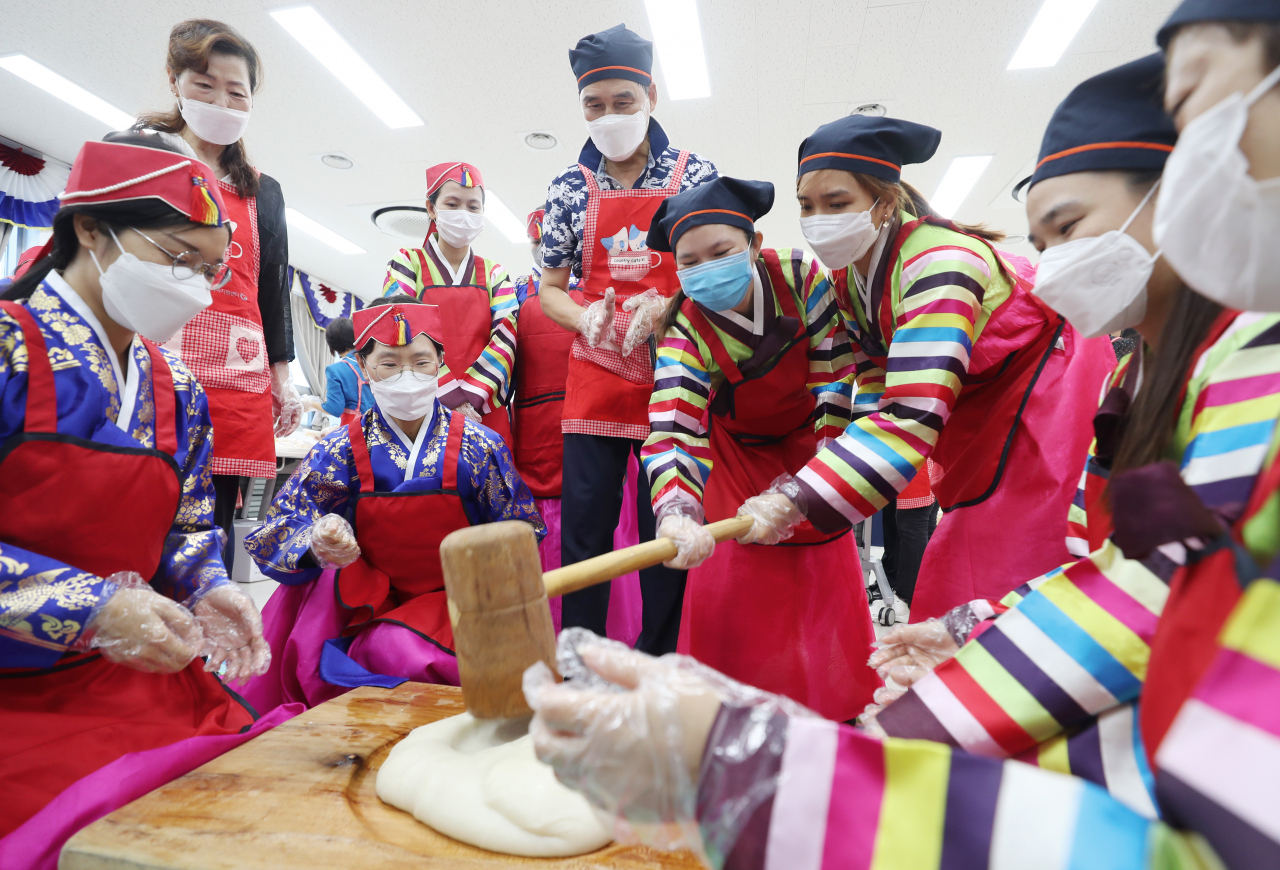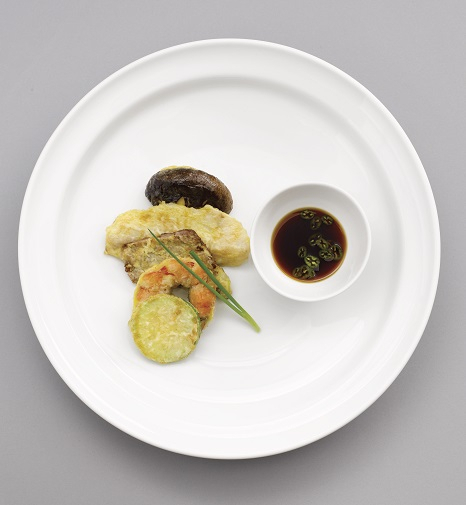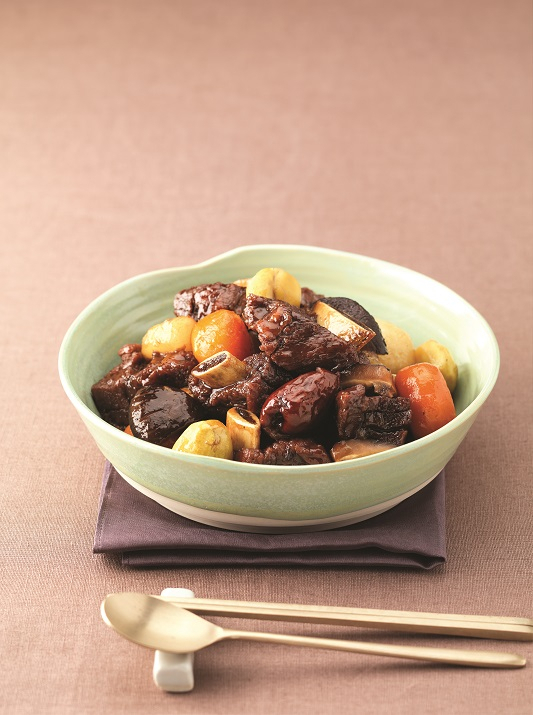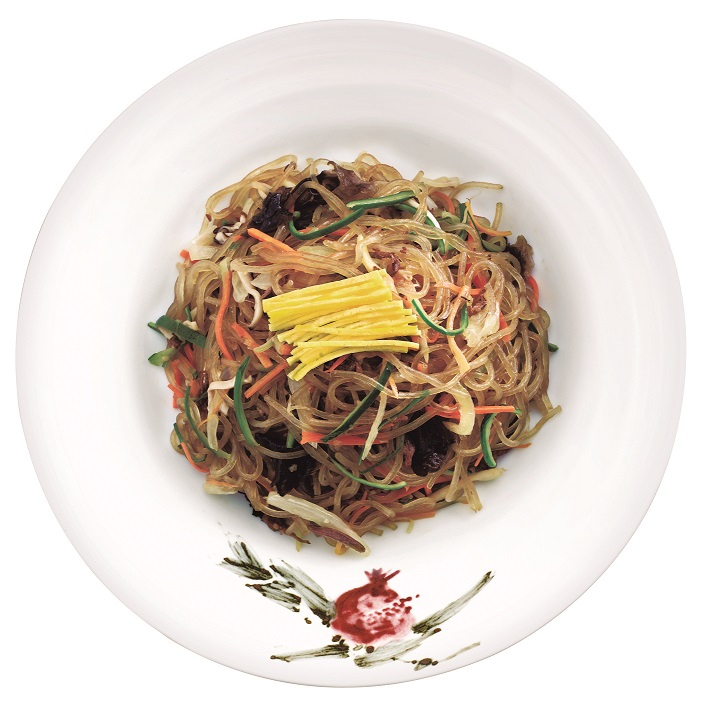 |
Visitors gather around for an injeomi-making event held at Daegu's family center, North Gyeongsang Province, on Monday. (Yonhap) |
The fall season is here, and so are family reunions as the Chuseok holiday approaches .
Women of the house traditionally prepared food for the ancestral rites and later, the extended family sat down to a table overflowing with special dishes prepared for Chuseok, a time of thanksgiving.
"Jeon" has been a constant staple among the ancestral offerings and later on the family dining table has had an assortment of jeon, typically slices of zucchini, fish and meat covered in a thin coat of flour and a coat of beaten egg and then pan fried.
The long hours spent in the kitchen preparing food, including jeon, often lead to resentment and may even erupt into all-out family quarrels.
But there is relief in sight, or at least a partial lifting of the burden.
On Monday, days before the start of this year's Chuseok holiday Friday, the Seonggyungwan Academy's Ritual Arrangement Committee, the authority on all things Confucian, announced a new guideline for jesa, or ancestral rites.
The revised guideline calls for a maximum of nine dishes placed on the jesa table. The basic dishes suggested are songpyeon, namul, kimchi, fruits, sanjeok and liquor.
It states that serving fried and oily food, which includes jeon, is improper for jesa, according to records.
Seonggyungwan's new guideline comes rather late. Families, especially in cities, have been observing Chuseok in different ways over the past several years.
Dining out and ordering Chuseok meals by the table is common, with popular restaurants fully booked weeks ahead.
But the holiday lasts several days, which leaves some space and time for families to enjoy homemade meals prepared together.
Following are three of the most popular Chuseok dishes -- modumjeon, or an assortment of jeon, galbijjim and japchae -- with step-by-step recipes provided by the Korean Food Promotion Institute.
All recipes are based on four servings.
 |
Modumjeon (Korean Food Promotion Institute) |
Modumjeon
Ingredients
Aehobakjeon
- 300 g zucchini
- 2 cups of flour
- 2 eggs
Saengseonjeon
- 250 g cod (or other white fish)
- Salt and pepper
- 2 cups of flour
- 2 eggs
Preparation
1. Cut zucchini into 0.6 cm thick round slices and sprinkle salt.
2. Fish fillets are cut into bite sizes.
3. Beat all eggs finely.
Cooking
Aehobakjeon
1. Pat dry the seasoned zucchini slices.
2. Heat the pan over medium heat with cooking oil. Coat the zucchini slices in flour and shake off the excess, soak them in beaten egg and and place them on the pan.
3. Turn over, cooking the pieces until both sides are yellow in color.
Saengseonjeon
1. Sprinkle salt and pepper on the fish.
2. Heat the pan over medium heat with cooking oil. Thinly coat the fish fillet pieces with flour, soak them in the beaten egg and place them on the pan.
3. Turn over, cooking the pieces until both sides are yellow in color.
 |
Galbijjim (Korean Food Promotion Institute) |
Galbijjim, braised short ribs
Ingredients
- 1 kg beef ribs (in 5 cm pieces)
- 5 cups of water
- 2 cups of beef rib broth
- 250g radish
- 100 g carrot
- 6 dried shiitake mushrooms
- chestnut
- 3 jujube
Sauce
- 4 tbsp soy sauce
- 4 tbsp pear juice
- 2 tbsp sugar
- 2 tbsp minced garlic
- 1 tbsp sesame oil and sesame salt
- a little bit of pepper
Preparation
1. Cut radish and carrot into 4 cm cubes and trim the corners into a round shape.
2. Soak shiitake mushrooms in water and when soft, remove the stems.
3. Peel chestnuts and remove seeds from jujube.
4. Prepare the sauce by mixing all the ingredients together.
Cooking
1. Soak beef ribs in cold water to drain blood. Pour 5 cups of water into a pot and boil the ribs for about 30 minutes. Cool the boiled ribs, remove tough tendons or chunks of fat attached to the ribs and make diagonal cuts on the meat, 2 cm apart.
2. Cool the beef rib broth and remove fat.
3. Boil the trimmed radish and carrot in water for 10 minutes and drain.
4. Put the boiled ribs in a pot, add the sauce, mixing evenly. Add 2 cups of beef rib broth and cook over medium heat for 40 minutes.
5. When the ribs are cooked, add boiled radish, carrots, soaked shiitake mushrooms, chestnuts, and jujube. Add the remaining seasoning and boil them over low heat for another 15 minutes.
6. When the ribs and vegetables taste evenly seasoned, serve them in a bowl.
 |
Japchae (Korean Food Promotion Institute) |
Japchae, stir-fried glass noodles with meat and vegetables
Ingredients
- 200 g beef (rump)
- 75 g cucumber
- 1 tsp salt water
- 100 g onions
- 60 g carrots
- 3 dried shiitake mushrooms
- 250 g glass noodles
- 1 egg
Meat sauce
- 2 tbsp soy sauce
- 1 tbsp sugar
- 4 tsp minced green onions
- 2 tsp minced garlic
- 2 tsp sesame salt
- 1 tsp sesame oil
- Little bit of pepper
Glass noodles seasoning
- 1 tbsp soy sauce
- 1 tbsp sugar
- 1 tbsp sesame oil
Preparation
1. Slice the beef into thin sticks, season with meat seasoning and marinate for 20 minutes.
2. Cut the cucumber into 4-cm pieces, remove the seeds, and slice them flat into 0.3-cm-thick pieces. Soak in salt water for 10 minutes and remove moisture.
3. Slice onions into thin strips
4. Soak shiitake mushrooms in water, remove the stems, and slice thinly.
5. Cut carrots into 4-cm-long pieces and slice them flat into 0.3-cm-think pieces.
6. Soak dried glass noodles in lukewarm water for 20 minutes.
7. The eggs are divided into yolk and white, and add a little salt to each and beat.
Cooking
1. Thinly fry the egg yolk and egg white separately and cut into 0.3 cm pieces.
2. Add cooking oil on a hot pan and stir-fry the sliced cucumbers, onions, shiitake mushrooms, and carrots separately in order. Season with salt over high heat and quickly remove from the pan.
3. Add a little cooking oil to the pan, stir-fry the marinated beef so that it does not stick together, and quickly remove from the pan.
4. Pour 4 cups of water into a pot and boil over medium heat. Add the soaked glass noodles, boil for 5 minutes, remove and drain. Add cooking oil to the pan and stir-fry the boiled glass noodles and glass noodles seasoning for 5 minutes.
5. Place stir-fried vegetables, meat, and glass noodles together in a large bowl, mix well. Serve on a plate with the egg garnish on top.
(Recipes provided by Korean Food Promotion Institute)






![[Weekender] Korea's traditional sauce culture gains global recognition](http://res.heraldm.com/phpwas/restmb_idxmake.php?idx=644&simg=/content/image/2024/11/21/20241121050153_0.jpg)
